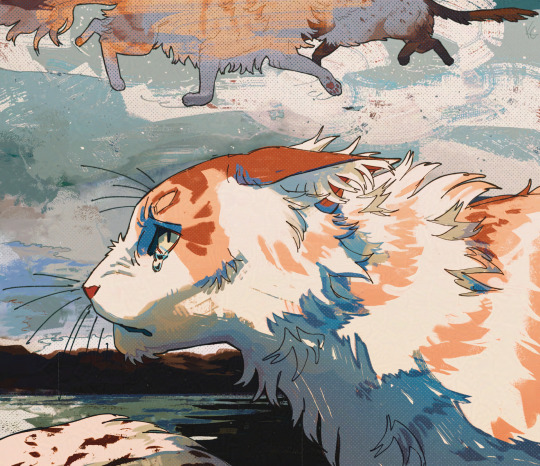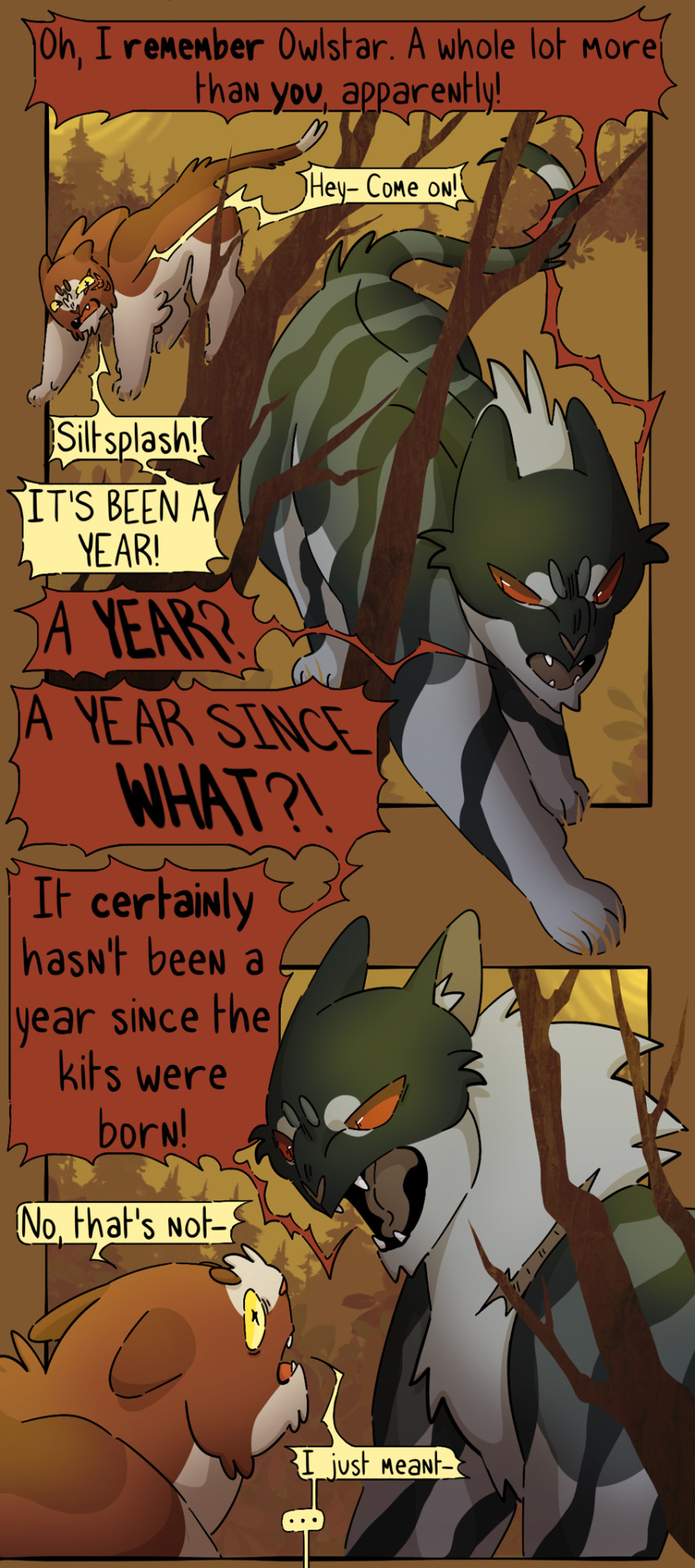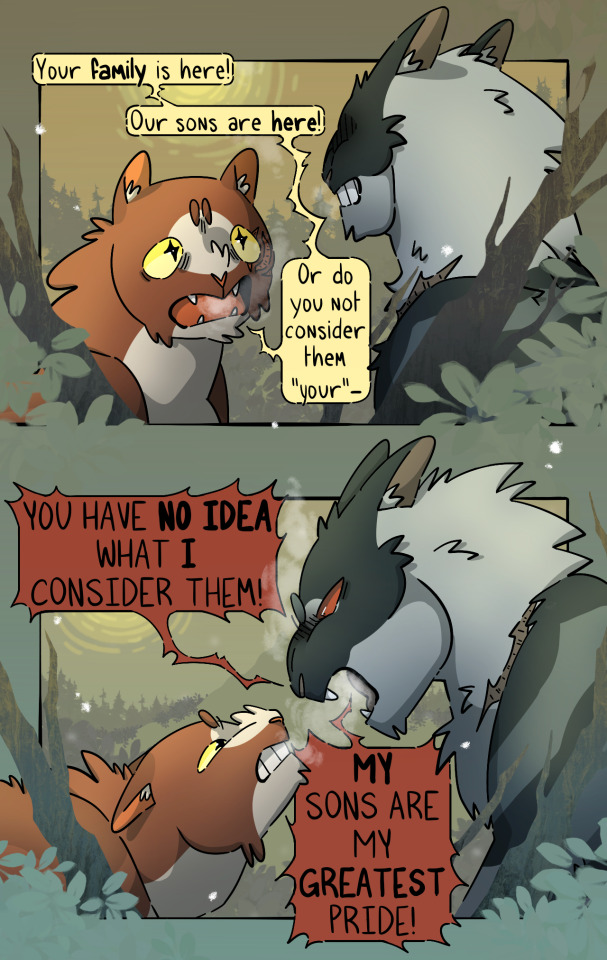My name is Olive, she/her/they/them. I post stuff about my OC clans - Seaclan, Clayclan, Brookclan, Duneclan and Mountainclan. This blog is entirely dedicated to Warrior cats, more precisely, its potential for lore and worldbuilding. My art and OC stuff is under the tag "the Iberian clans", for fanart search "my art". Hope you enjoy this mess of a blog. Main is whocares-idont
Don't wanna be here? Send us removal request.
Text

☆ The inside of The Prophecies Begin #3 hardcover version as shown via the Amazon listing. ☆
292 notes
·
View notes
Text
TW: BLOOD - DEATH


The first Curse (Part 7) FINAL
685 notes
·
View notes
Text


Guys i dont think guard is planning to be turning any skulls
As some of you know im doing my internship right now so the pages will slow down a bit. The next comic is already done and on patreon tho and next chapters sketches are there too!
COMICFURY: (for reading the whole thing easier): Covers! - Cover | Jumalanpelko - The fear of god
PATREON (for 1 euro you can get all the pages as I make them) : https://www.patreon.com/c/sysihiltunen
509 notes
·
View notes
Text















MOON 34-35 - Leafbare
FIRST PREVIOUS NEXT
320 notes
·
View notes
Text











RECAP OF ALLEGIANCES - End of Moon 33
FIRST PREVIOUS NEXT
441 notes
·
View notes
Text

how’s he gonna get out of this one then
2K notes
·
View notes
Text
Loudclan - Moon 33: Part 3

A cold snap begins to take hold of the latter part of the day as Owlstar leads Siltsplash far away from the crowded ceremony.












At this time of year the snow should simply melt into the earth, coating everything in a layer of thick wet frost, but these flakes settle and stick, growing into a miniature white mountain range that fills the valley.
[Been sitting on some of this Siltsplash dialouge for MONTHS, very happy to finally let them blow up at Owlstar. I also ended up having a lot of fun with the background/foreground elements, and for once managed to finish something despite it not looking exactly the way I wanted it to. The more I think about this moon the more parts get added, so buckle in cause we're only about half way. Now I must go scurry away to get ready for a test I've been putting off weeks.]
705 notes
·
View notes
Video
youtube
Hyperfixation took over my life and I spent the last two days making an 8 minute SquirrelCrow animatic set to a song from a musical about War & Peace
61 notes
·
View notes
Text




Honey is a comic based on my run on clangen (lifegen). I think I'll slowly post it here on tumblr, but it'll update faster on Comicfury.
This is not a Warrior Cats comic! They're just cats.
14K notes
·
View notes
Text

Waves Always Crash /// Page 107
Previous || First || Next
okay
[You can read ahead on Patreon!]
313 notes
·
View notes
Text
hi guys it's me warrior cats villain i'm outside your window right now. i hate god and i hate feeding the elderly. hi do you hear me. i'm a sinister outsider come to take control of those clans that i oh so hate. under my new rule we won't pray to god and we won't feed the elderly and i'm going to teach the children how to pirate movies. i love boiling babies and eating them. fuck starclan. i'm here to justify your cat xenophobia because im a loner and/or was exiled at some point but if i was im backkk #lol #swag. i'm like this because i was born with an innately evil spirit and all my actions are predetermined from birth but also because i didn't have a father growing up and my mum was a bitch or something idk. pick up the phone i'm warrior cats villain. we're going to exile the elders together because i believe in equality and the dismantlement of borders but not retirement or kindness or goodwill because only starclan cares about those things (lame, gay) and im (bad, gay, evil, hater). pick up the phone. we're going to get everybody to stop believing in starclan so they start killing and maiming each other. jesse we need to cook. are you listening to m
703 notes
·
View notes
Text



Why must we pick sides, I love BOTH of these girls
815 notes
·
View notes
Text


Swiftpaw's Last Fight - 2nd Redraw!
2K notes
·
View notes





